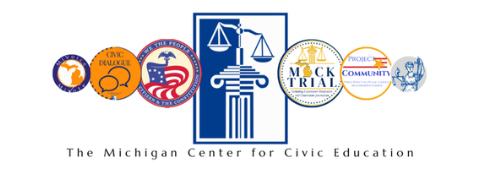The goal of this activity is to introduce 6th grade students to the 6th Amendment of the US Constitution (guarantee of an impartial jury for criminal defendants). The materials illustrate how the American juror selection process differs from the jury selection process used in ancient times during the Roman Republic.
Civics Lessons
Constitution Day Lesson-6th Amendment
Colonial Influences
American colonists had some strong ideas about what they wanted in a government. These ideas surface in colonial documents, and eventually became a part of the founding documents like the Declaration of Independence and Constitution. But where did they come from? This lesson looks at the Magna Carta, Mayflower Compact, English Bill of Rights, Cato’s Letters and Common Sense.
Constitution Day Lesson-1st Amendment
The goal of this activity is to introduce 7th grade students to the First Amendment of the U. S. Constitution.
Matching Game with the U.S. Constitution
By the end of this lesson, students will understand what the Constitution is and
what it does for them; recognize key images related to the
Constitution and its history.
Constitution Day Lesson 14th Amendment
The goal of this activity is to introduce 8th grade students to the Fourteenth Amendment of the U. S. Constitution (equal protection under the law).
Orb and Effy Learn About Authority
Grade: K-1
This lesson introduces the study of authority. Children learn when people are exercising authority and when they are exercising power without authority. Children learn how and why authority is useful in society.
The Invaders: A Constitutional Rights Activity
Introduces students to the rights guaranteed in the U.S. Constitution.
Voting and the Constitution
Students will learn about the Constitution’s many provisions for voting, including how votes affect the makeup of the government and its branches. The lesson and lesson extensions will have students engage in activities and participate in discussions about how officials are chosen in the three branches of government and how the election process includes the Electoral College.
Rules, Rules, Rules
This activity helps students understand the need for rules, the rule-making process, and the role of the student / citizen. The classroom constitution provides a foundation for understanding and reinforcing the principles and ideals which provide the framework for American democracy.
What Makes an Amendment?
Students will learn about the process of amending the Constitution. They will review the details of the amendment process and discuss its pros and cons. In class activities, assignments, and the Lesson Extensions, student partners and groups will create persuasive presentations that they will share with the class to gain support for an amendment.

